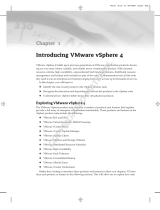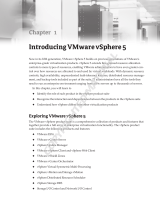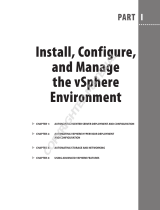Wiley 978-0-470-18313-7 Datasheet
- Category
- Software manuals
- Type
- Datasheet
Wiley 978-0-470-18313-7 empowers you with a comprehensive understanding of virtualization technologies and their practical implementation using VMware Infrastructure 3 (VI3). This book delves into the core components of VI3, including ESX Server, VirtualCenter, VMotion, and DRS, providing you with a solid foundation for designing, deploying, and managing a virtualized infrastructure. Through hands-on exercises and real-world examples, you'll gain practical experience in configuring, optimizing, and troubleshooting your VI3 environment.
Wiley 978-0-470-18313-7 empowers you with a comprehensive understanding of virtualization technologies and their practical implementation using VMware Infrastructure 3 (VI3). This book delves into the core components of VI3, including ESX Server, VirtualCenter, VMotion, and DRS, providing you with a solid foundation for designing, deploying, and managing a virtualized infrastructure. Through hands-on exercises and real-world examples, you'll gain practical experience in configuring, optimizing, and troubleshooting your VI3 environment.








-
 1
1
-
 2
2
-
 3
3
-
 4
4
-
 5
5
-
 6
6
-
 7
7
-
 8
8
Wiley 978-0-470-18313-7 Datasheet
- Category
- Software manuals
- Type
- Datasheet
Wiley 978-0-470-18313-7 empowers you with a comprehensive understanding of virtualization technologies and their practical implementation using VMware Infrastructure 3 (VI3). This book delves into the core components of VI3, including ESX Server, VirtualCenter, VMotion, and DRS, providing you with a solid foundation for designing, deploying, and managing a virtualized infrastructure. Through hands-on exercises and real-world examples, you'll gain practical experience in configuring, optimizing, and troubleshooting your VI3 environment.
Ask a question and I''ll find the answer in the document
Finding information in a document is now easier with AI
Related papers
Other documents
-
Intel S5000PAL Installation guide
-
Dell Vizioncore User guide
-
VMware vCenter Converter 3.0 User guide
-
Dell 3i User manual
-
Symantec Backup Exec 12.5 User manual
-
Gateway vSphere 4 Datasheet
-
VMware vCenter vCenter Lab Manager 3.0 Installation guide
-
ACRONIS BACKUP AND RECOVERY 10 ADVANCED SERVER VIRTUAL EDITION - COMMAND LINE REFERENCE UPDATE 3 User guide
-
VMware vCenter Converter Standalone 4.0.1 User guide
-
Dell Active System Manager Version 7.0 Practices Guide














